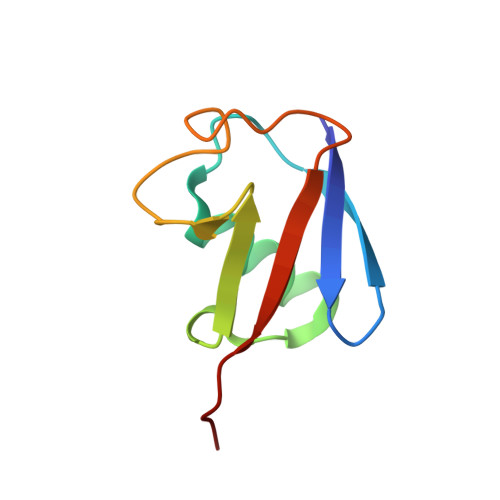Enhancing NMR derived ensembles with kinetics on multiple timescales.
Smith, C.A., Mazur, A., Rout, A.K., Becker, S., Lee, D., de Groot, B.L., Griesinger, C.(2020) J Biomol NMR 74: 27-43
- PubMed: 31838619
- DOI: https://doi.org/10.1007/s10858-019-00288-8
- Primary Citation of Related Structures:
6V5D - PubMed Abstract:
Nuclear magnetic resonance (NMR) has the unique advantage of elucidating the structure and dynamics of biomolecules in solution at physiological temperatures, where they are in constant movement on timescales from picoseconds to milliseconds. Such motions have been shown to be critical for enzyme catalysis, allosteric regulation, and molecular recognition. With NMR being particularly sensitive to these timescales, detailed information about the kinetics can be acquired. However, nearly all methods of NMR-based biomolecular structure determination neglect kinetics, which introduces a large approximation to the underlying physics, limiting both structural resolution and the ability to accurately determine molecular flexibility. Here we present the Kinetic Ensemble approach that uses a hierarchy of interconversion rates between a set of ensemble members to rigorously calculate Nuclear Overhauser Effect (NOE) intensities. It can be used to simultaneously refine both temporal and structural coordinates. By generalizing ideas from the extended model free approach, the method can analyze the amplitudes and kinetics of motions anywhere along the backbone or side chains. Furthermore, analysis of a large set of crystal structures suggests that NOE data contains a surprising amount of high-resolution information that is better modeled using our approach. The Kinetic Ensemble approach provides the means to unify numerous types of experiments under a single quantitative framework and more fully characterize and exploit kinetically distinct protein states. While we apply the approach here to the protein ubiquitin and cross validate it with previously derived datasets, the approach can be applied to any protein for which NOE data is available.
- Department for Theoretical and Computational Biophysics, Max Planck Institute for Biophysical Chemistry, Göttingen, Germany. colin.smith@wesleyan.edu.
Organizational Affiliation:
















